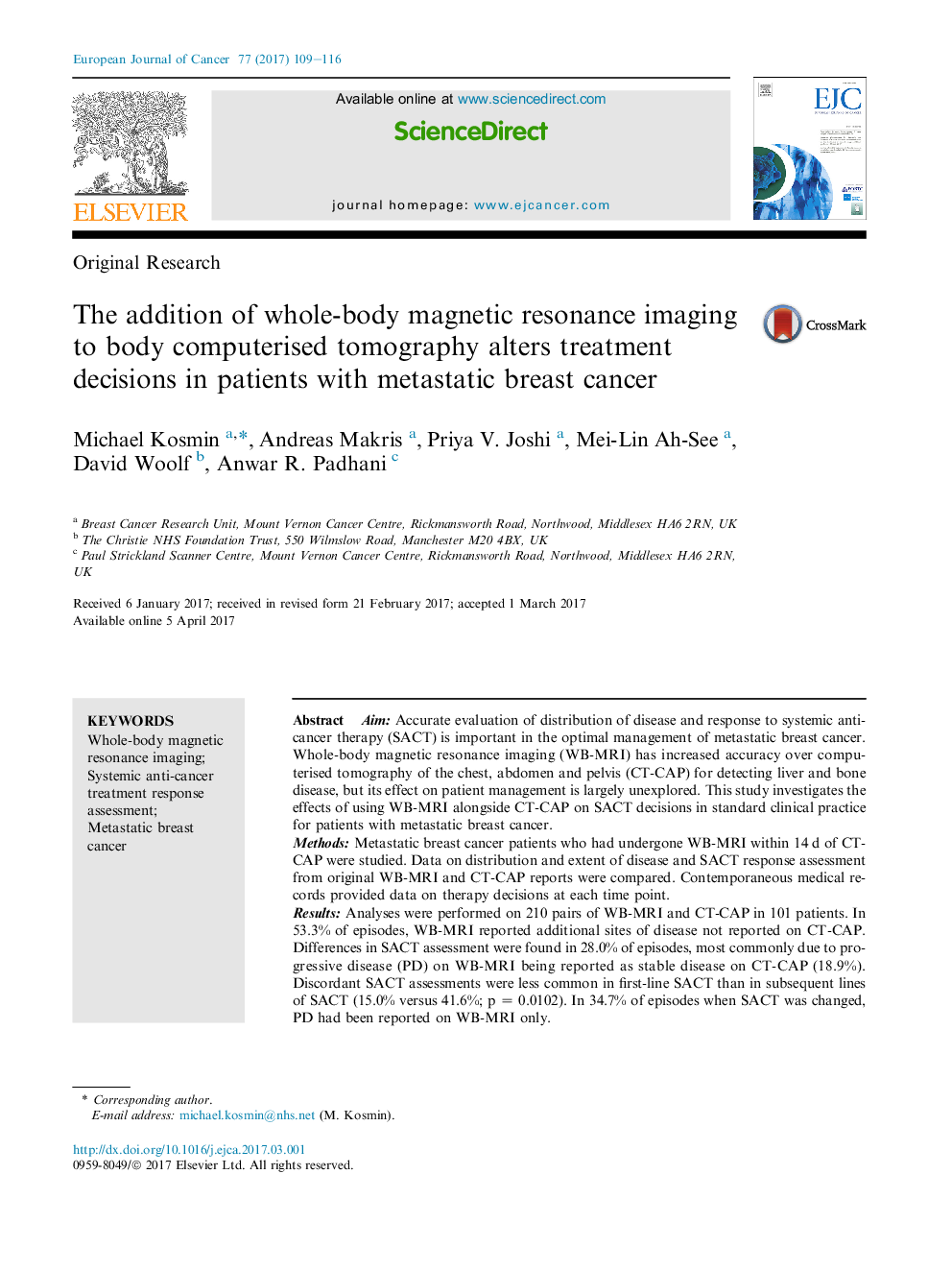| کد مقاله | کد نشریه | سال انتشار | مقاله انگلیسی | نسخه تمام متن |
|---|---|---|---|---|
| 5526616 | 1547055 | 2017 | 8 صفحه PDF | دانلود رایگان |
- Whole-body magnetic resonance imaging (WB-MRI) reported additional sites of metastatic disease in over half of episodes.
- In 34.7% of cases, when a systemic anti-cancer therapy change was made, progressive disease was reported on WB-MRI only.
- Assessment with WB-MRI alters therapy decisions made in standard clinical practice.
AimAccurate evaluation of distribution of disease and response to systemic anti-cancer therapy (SACT) is important in the optimal management of metastatic breast cancer. Whole-body magnetic resonance imaging (WB-MRI) has increased accuracy over computerised tomography of the chest, abdomen and pelvis (CT-CAP) for detecting liver and bone disease, but its effect on patient management is largely unexplored. This study investigates the effects of using WB-MRI alongside CT-CAP on SACT decisions in standard clinical practice for patients with metastatic breast cancer.MethodsMetastatic breast cancer patients who had undergone WB-MRI within 14 d of CT-CAP were studied. Data on distribution and extent of disease and SACT response assessment from original WB-MRI and CT-CAP reports were compared. Contemporaneous medical records provided data on therapy decisions at each time point.ResultsAnalyses were performed on 210 pairs of WB-MRI and CT-CAP in 101 patients. In 53.3% of episodes, WB-MRI reported additional sites of disease not reported on CT-CAP. Differences in SACT assessment were found in 28.0% of episodes, most commonly due to progressive disease (PD) on WB-MRI being reported as stable disease on CT-CAP (18.9%). Discordant SACT assessments were less common in first-line SACT than in subsequent lines of SACT (15.0% versus 41.6%; p = 0.0102). In 34.7% of episodes when SACT was changed, PD had been reported on WB-MRI only.ConclusionsSACT decisions in routine practice were altered by the use of WB-MRI. Further research is required to investigate whether earlier identification of PD by WB-MRI leads to improved patient outcomes.
Journal: European Journal of Cancer - Volume 77, May 2017, Pages 109-116
